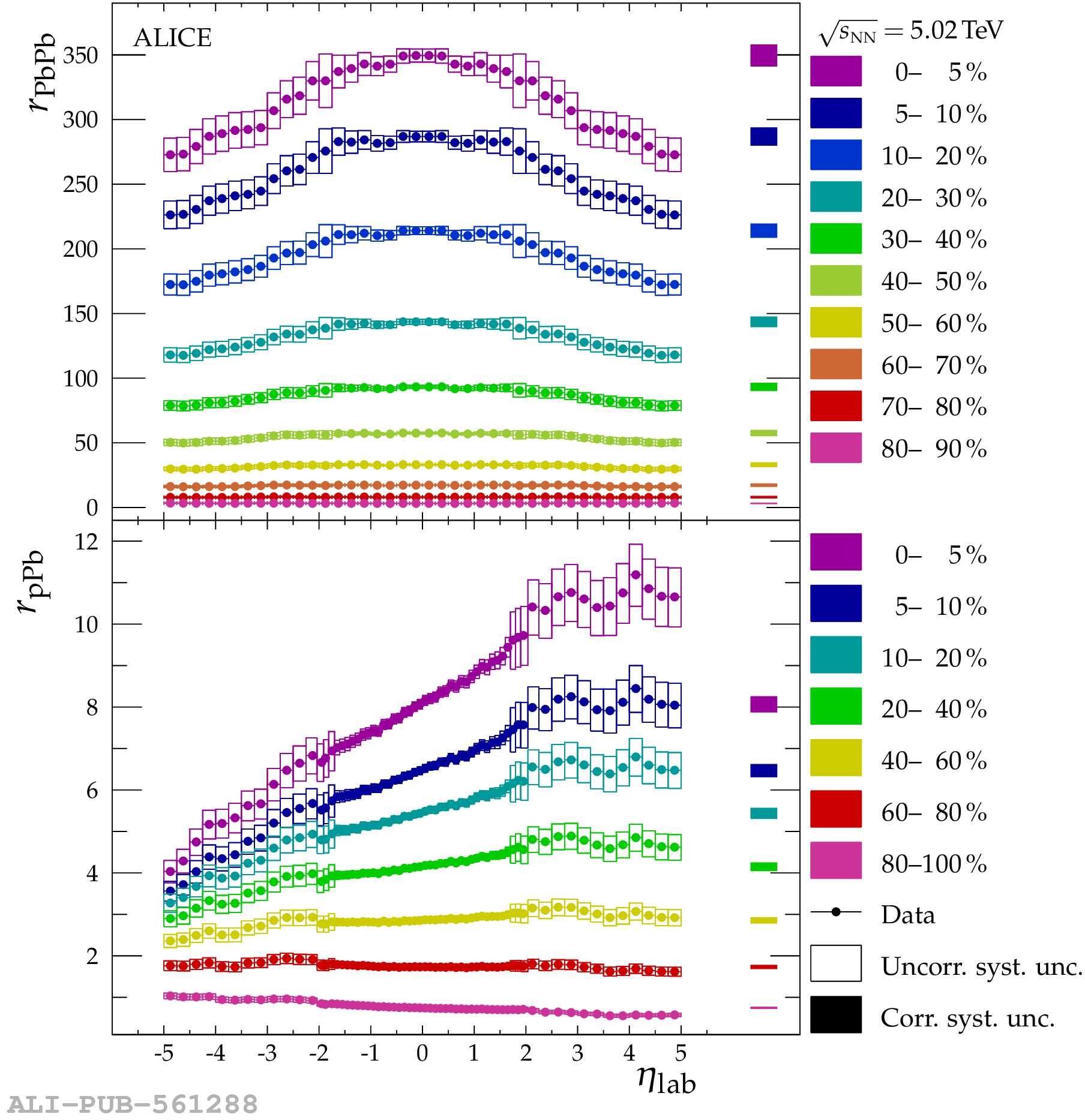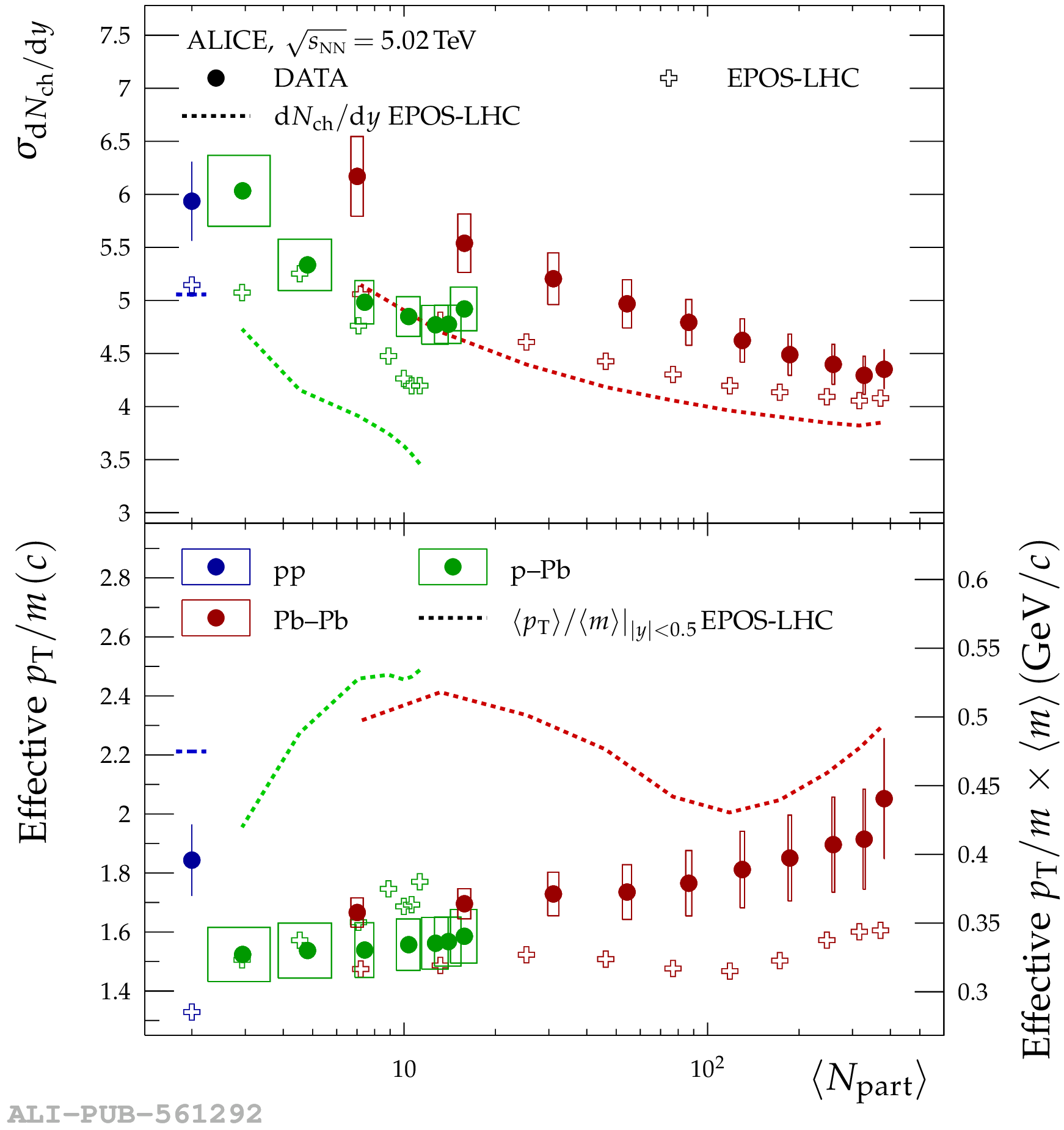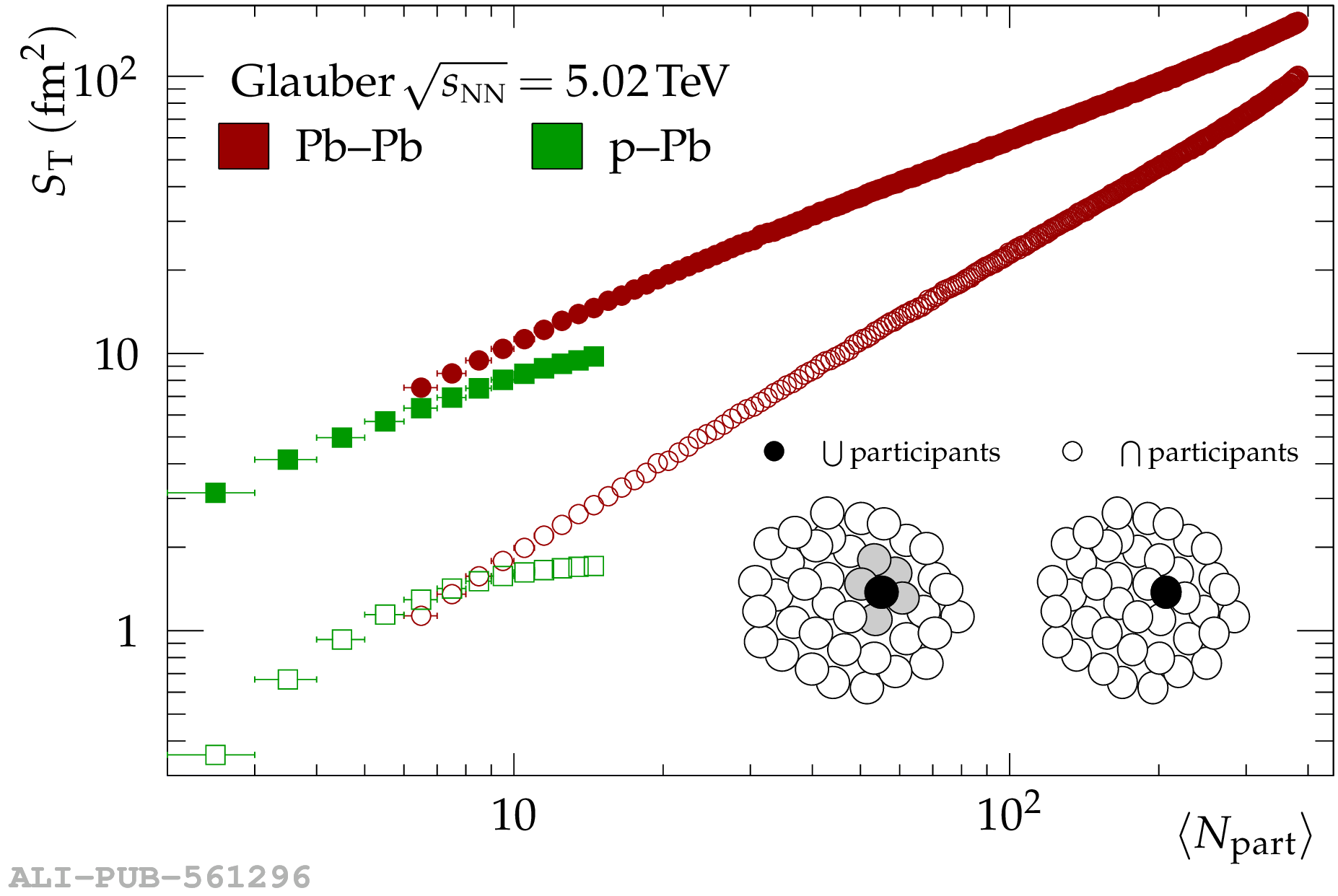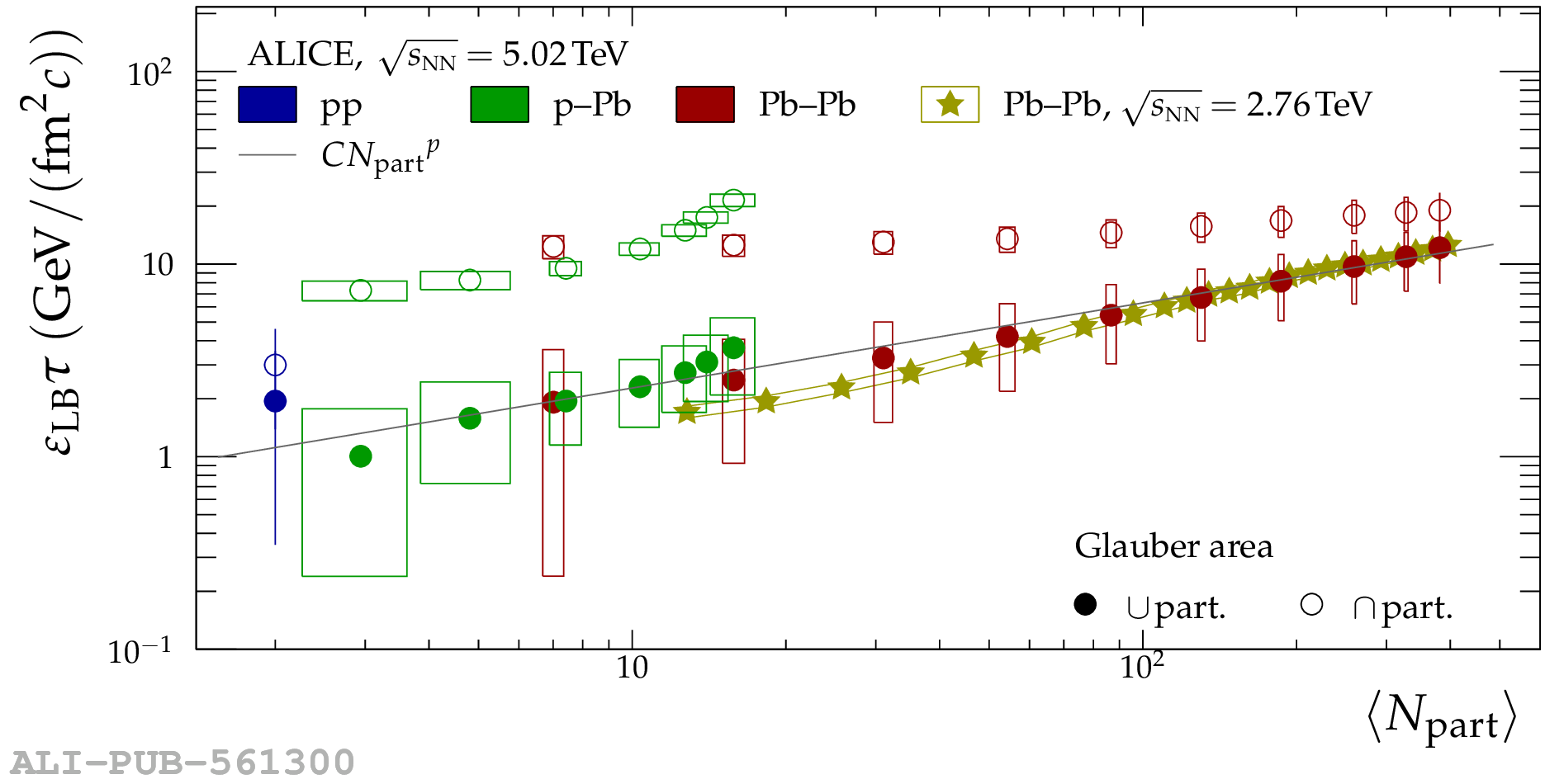We present the first systematic comparison of the charged-particle pseudorapidity densities for three widely different collision systems, pp, p-Pb, and Pb-Pb, at the top energy of the Large Hadron Collider ($\sqrt{s_{\rm NN}} = 5.02$ TeV) measured over a wide pseudorapidity range (${-3.5 <~\eta <~5}$), the widest possible among the four experiments at that facility. The systematic uncertainties are minimised since the measurements are recorded by the same experimental apparatus (ALICE). The distributions for p-Pb and Pb-Pb collisions are determined as a function of the centrality of the collisions, while results from pp collisions are reported for inelastic events with at least one charged particle at midrapidity. The charged-particle pseudorapidity densities are, under simple and robust assumptions, transformed to charged-particle rapidity densities. This allows for the calculation and the presentation of the evolution of the width of the rapidity distributions and of a lower bound on the Bjorken energy density, as a function of the number of participants in all three collision systems. We find a decreasing width of the particle production, and roughly a smooth ten fold increase in the energy density, as the system size grows, which is consistent with a gradually higher dense phase of matter.
Phys. Lett. B 845 (2023) 137730
HEP Data
e-Print: arXiv:2204.10210 | PDF | inSPIRE
CERN-EP-2022-055
Figure group






